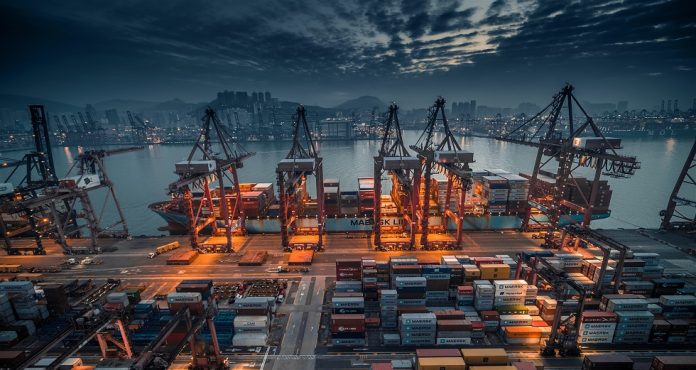Global trade is set to reach a record level of about US$ 32 trillion for 2022. Trade in goods is expected to total almost US$ 25 trillion (an increase of about 10 per cent from 2021). Trade in services is expected to total almost US$ 7 trillion (an increase of about 15 per cent from 2021). Those record levels are largely due to robust growth in the first half of 2022. Conversely, trade growth has been subdued during the second half of the year. During Q3 2022, trade in goods declined by about one per cent relative to Q2 2022. Trade in services increased by about 1.3 per cent during the same period. The UNCTAD nowcast indicates that the value of global trade will decrease in Q4 2022 both for goods and for services.
While the value of international merchandise trade has stabilized during the second half of 2022, the volume of trade increased during Q3 2022 and is expected to continue increasing during Q4. Positive growth in the volume of international trade indicates resilience of global demand.
Summary and outlook
Deteriorating economic conditions and rising uncertainties have resulted in a trade slow-down during the second half of 2022. However, the decline in global trade has been nominal, as the volume of trade continued to increase throughout 2022, a signal of resilient global demand. Part of the decline in the value of international trade during the second half of 2022 is due to a decrease in the prices of primary products, especially energy. By contrast, the prices of internationally traded intermediate inputs and consumer goods have continued to increase during the same period, raising additional concerns about persisting global inflation. The decline in the value of global trade has been so far limited to goods. Trade in services has been more resilient, with its value continuing to rise during the second half of 2022. The ongoing trade slowdown is expected to worsen for 2023. While the outlook for global trade remains uncertain, negative factors appear to outweigh positive trends.
Negative factors:
• Lower economic growth
Economic growth forecasts for 2023 are being revised downwards due to high energy prices, rising interest rates, sustained inflation in many economies, and negative global economic spillovers from the war in Ukraine.
• High prices of traded goods
Persistently high energy prices and the continued rise in the prices of intermediate inputs and consumers goods are expected to dampen demand for imports and to lead to a decline in the volume of international trade.
• Concerns of debt sustainability
The record levels of global debt and the increase in interest rates pose significant concerns for debt sustainability. The ongoing tightening of financial conditions is expected to further heighten pressure on highly indebted governments, amplifying vulnerabilities and negatively affecting investments and international trade flows.
Positive factors:
• Improvements in the logistics of global trade
Ports and shipping companies have now adjusted to the challenges brought by the Covid-19 pandemic. New ships are entering service, and port congestion is being resolved. Freight and cargo rates are still higher than the pre-pandemic averages, but their trend is downwards.
• Trade agreements coming into fruition
Recently signed agreements such as the Regional Comprehensive Economic Partnership and the African Continental Free Trade Area, as well as a number of smaller trade agreements, should come to fruition and provide some momentum for international trade.
Other factors affecting international trade patterns:
• Reshaping of global supply chains
Risks and uncertainties remain high for global supply chain operations. Risk mitigation strategies, such as the diversification of suppliers, reshoring, near-shoring and friend-shoring, will likely affect international trade patterns in the coming year.
• Transition towards a greener global economy
The efforts towards a greener global economy are expected to spur demand for environmentally sustainable products, while reducing the demand for goods with high carbon content and for fossil fuels energy. This shift will reflect into international trade patterns.
Source: www.hellenicshippingnews.com






































